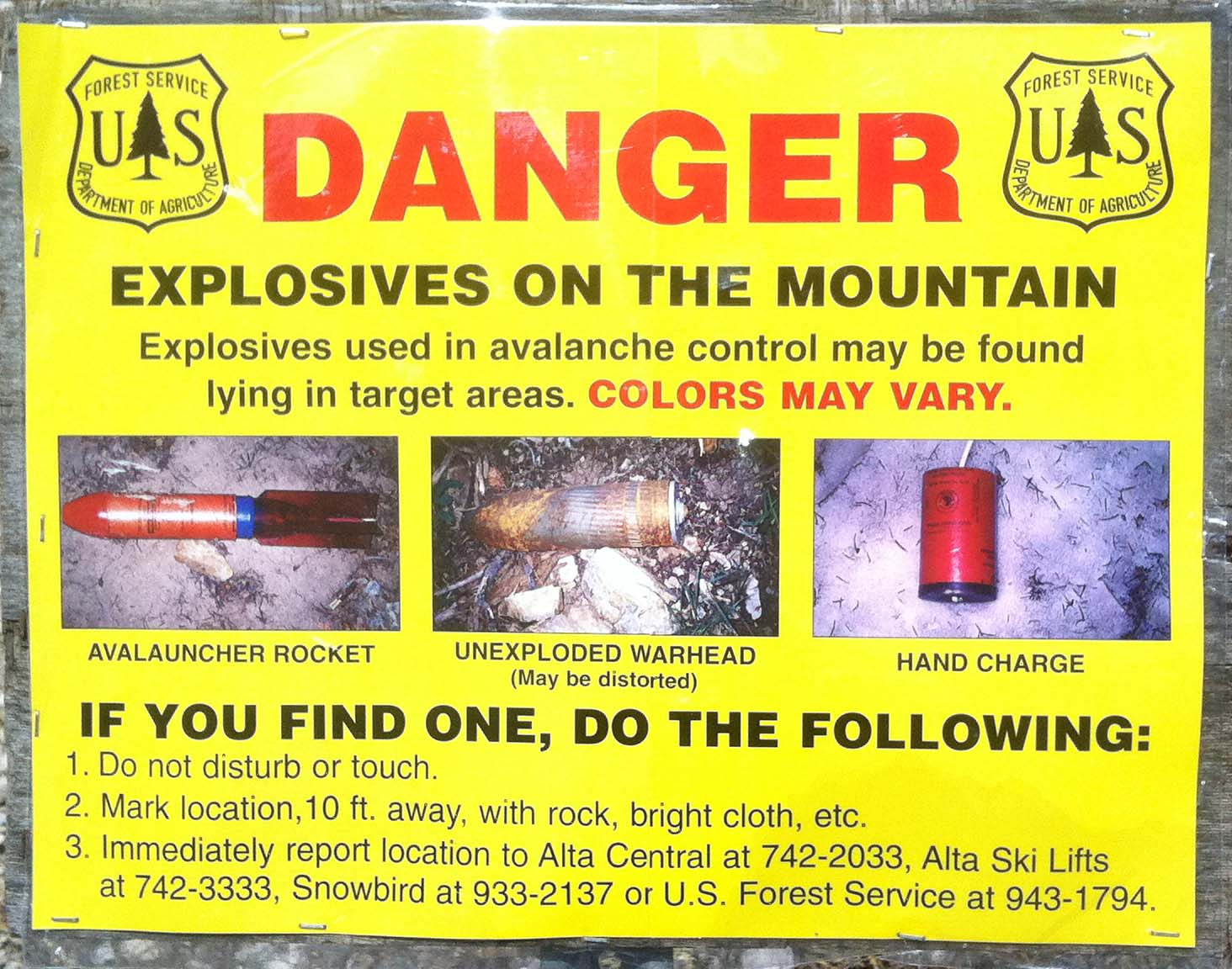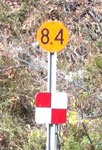


There are plenty of hazards in the mountains. That doesn't mean you can't play in the mountains, but you do need to play smartly.
The best ways to avoid being buried in an avalanche are to read the daily avalanche advisory that is issued by the Utah Avalanche Center and take a basic avalanche course. You don't need to be a rocket scientist to avoid avalanches—you do need common sense and a little education.
Keep in mind that "sidecountry" terrain (i.e., terrain that is accessed from a ski area) is still avalanche terrain. Don't get lulled into thinking that proximity to a ski area or multiple ski tracks reduce the risk of an avalanche. Also remember that you don't need to be skiing or snowboarding to be exposed to avalanche risk—snowshoers and hikers beware.
Many of the roadways in the Big and Little Cottonwood canyons, especially on the north-side of the canyons, prohibit parking between November 1 through May 15. And the no parking signs are often placed far apart which makes it less clear where you can, and cannot, park. Those signs aren't there because the Utah Department of Transportation doesn't want you skiing (the avalanche experts who maintain the roads are die-hard backcountry skiers), they are posted so your car doesn't get swept off the road by an avalanche. You'll also see that some signs prohibit stopping as well as parking during the winter.
When you do park, make sure your car is pointed the correct direction, is well to the right of the white "fog" line (and off the pavement if possible), and that it won't interfere with snow removal.

Small signs like the one shown here are placed strategically in Big and Little Cottonwood Canyon. These signs indicate locations that are relatively safe from avalanches. If there is an avalanche followed by a road closure while you're in the canyon, police officers, ski patrollers, and mountain rescuers (should) know that these are safe zones. You should too.
In addition to avoiding tickets and not getting your car buried by an avalanche (and giving the snow removal folks a break), it's also important to limit the number of cars in the canyon by carpooling. On a typical February day, more than 40,000 cars drive up (and down) the Cottonwood Canyons—yowser!
The standard meet-your-buddy locations are at the Olympus Hills shopping center, the Park-and-Rides at the bottom of Big and Little Cottonwood canyons, and the Swamp Lot (at about 8100 South Wasatch Boulevard).
If you're not leaving with the Dawn Patrol, there is good bus service in the Cottonwood canyons. And the driver will stop at many less common places along the way (e.g., Spruces and Cardiff trailheads). Many season passes double as bus passes.
The Wasatch mountains are a gem. It's important that we treat them as such. That means that we shouldn't leave any evidence of our visit other than ski tracks.
The entire Wasatch Range, from City Creek to Bells Canyon, are part of are the Wasatch Watershed and provide drinking water for more than one million people.
Being in a watershed means, theoretically, that you shouldn't pee on the ground. Okay, that's a bit restrictive, but if you need to urinate, please do so off the skin track and preferably near a tree well. Poke a hole in the snow with your ski pole, urinate, and push a little snow on top. That snow will melt, so put it in an unobtrusive place—yellow snow is ugly snow. If you need to poop, do so at home or pack it out.
Dogs are not allowed in Big or Little Cottonwood Canyon (exceptions are made for permitted dogs registered to canyon residents, disability service animals, and search and rescue dogs). Dogs are allowed in Mill Creek Canyon, although they can only be off-leash on odd numbered days and must always be leashed on roads and in parking and picnic areas. If your pet poops, you not only need to pick it up, but you also need to pack it out—no flicking poop into the bushes to wait for the stinky spring thaw or leaving crap-bags along the trail with the "intent" of picking it up later.
We are taught manners as children so we'll know what is socially acceptable and unacceptable behavior. Manners aren't intended to restrict our behavior; they make it more pleasant to share space with others. When in the backcountry, it is polite to lower your voice (sound carries in wide, open spaces), silence your cell phone (cell phones can interfere with avalanche transceivers so it's best to turn them off), and don't create avalanche danger by dropping in above other skiers. It is also good manners to avoid poaching someone's line. It should go without saying, but please avoid confrontation with landowners and with people using motorized transportation.
The avalanche professionals who work for the Utah Department of Transportation (UDOT) have the challenging job of mitigating avalanche danger on the Big and Little Cottonwood Canyon state highways. As part of this process, they need to temporarily close the roads so they can safely use explosives to release avalanches. Please respect these temporary closures so they can complete their work and reopen the roads. Ignoring closures not only puts you at risk, but it delays reopening the backcountry. You can get road information from the UAC advisory, from the 530 AM radio station at the mouth of Little Cottonwood Canyon, by calling 511 from within Utah, by subscribing to the @CanyonsAlert or @UDOTavy Twitter feeds, and from the https://udot.utah.gov website.